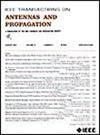动态物质与调制系统中的波介质相互作用
IF 4.6
1区 计算机科学
Q1 ENGINEERING, ELECTRICAL & ELECTRONIC
引用次数: 0
摘要
时空调制系统由于其与运动物质系统的相似性、独特的特性和有前景的应用而引起了人们的极大关注。与传统的运动物质系统不同,调制系统不涉及任何物质的净运动,因此更容易实现,并且能够获得相对论和超光速。然而,这种介质中基本的波-介质相互作用方面,如散射和能量-动量关系,到目前为止基本上还没有被探索过。在本文中,我们填补了这一空白,考虑了三个动态系统:运动物质块,运动摄动界面和运动摄动截断周期结构,并提供了相应的一般公式并进行了比较。我们的研究揭示了在这种系统中运动界面对波的“推”和“拉”效应所起的重要作用。此外,它还描述了由传统和反向菲涅耳-菲索阻力效应引起的运动介质和均质运动扰动结构之间不同的能量和动量传递。本文章由计算机程序翻译,如有差异,请以英文原文为准。
Wave-Medium Interactions in Dynamic Matter and Modulation Systems
Space-time modulation systems have recently garnered significant attention due to their resemblance to moving-matter systems, unique properties, and promising applications. Unlike conventional moving-matter systems, modulation systems do not involve any net motion of matter and are therefore easier to implement and capable to attain relativistic and superluminal velocities. However, the fundamental wave-medium interaction aspects in such media, such as scattering and energy-momentum relations, have been essentially unexplored to date. In this article, we fill this gap, considering three dynamic systems: moving-matter blocs, moving-perturbation interfaces, and moving-perturbation truncated periodic structures, and provide corresponding general formulations along with comparisons. Our investigation reveals significant roles played by the “pushing” and “pulling” effects of the moving interface onto the wave in such systems. Moreover, it describes different energy and momentum transfers between moving media and homogenized moving-perturbation structures that result from conventional and reverse Fresnel-Fizeau drag effects.
求助全文
通过发布文献求助,成功后即可免费获取论文全文。
去求助
来源期刊
CiteScore
10.40
自引率
28.10%
发文量
968
审稿时长
4.7 months
期刊介绍:
IEEE Transactions on Antennas and Propagation includes theoretical and experimental advances in antennas, including design and development, and in the propagation of electromagnetic waves, including scattering, diffraction, and interaction with continuous media; and applications pertaining to antennas and propagation, such as remote sensing, applied optics, and millimeter and submillimeter wave techniques

 求助内容:
求助内容: 应助结果提醒方式:
应助结果提醒方式:


